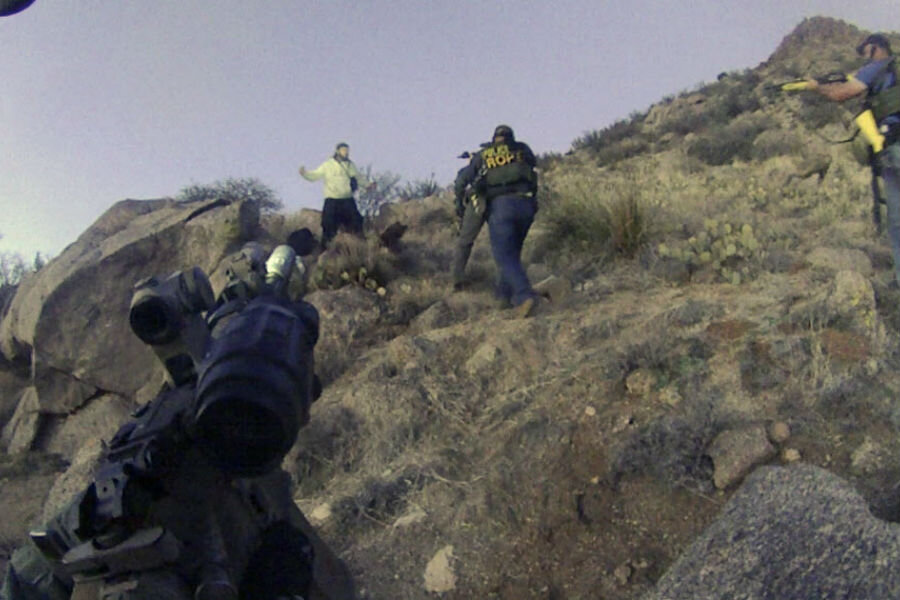Albuquerque police officers to face murder charges in death of homeless man
Loading...
A New Mexico prosecutor bypassed the state grand jury process on Monday and filed papers asking a judge to bring murder charges against two Albuquerque police officers who shot and killed a homeless man at his illegal campsite last March.
The prosecutor, District Attorney Kari Brandenburg of Bernalillo County, which includes Albuquerque and the surrounding region of central New Mexico, filed “criminal information” papers with the county court – a process, authorized by state law, that allows a prosecutor to present charges without an indictment from a secret grand jury.
The case will now proceed to a preliminary hearing in open court, a kind of “mini trial,” where a judge will determine whether there is enough “probable cause” to proceed to a full jury trial, District Attorney Brandenburg said during a press conference Monday.
“We’ve always said that if we can meet that standard, we’ll move forward – and we believe we can meet that standard,” Brandenburg said.
The district attorney proposed charging SWAT team member Dominique Perez and former police detective Keith Sandy with an open charge of murder in the shooting of James Boyd, a homeless man who was carrying two small knives when he was shot in 2014.
But the criminal information papers filed against the two Albuquerque police officers come after two high-profile grand jury cases last year plunged the nation’s criminal justice systems into tumult. Violent protests erupted in 2014 after grand juries in Missouri and New York declined to bring charges against police officers who had killed unarmed citizens during arrests.
But even before the cases of Eric Garner and Michael Brown exploded this past summer, the shooting of Mr. Boyd, a homeless white man who had been diagnosed with schizophrenia, led to angry street protests against the Albuquerque Police Department last March.
But Brandenburg is also under additional scrutiny in this case. In April, the Justice Department released a scathing report on the Albuquerque Police Department, which serves a city of nearly 550,000 people. Federal officials found that the Albuquerque police had one of the highest rates of police shootings in the nation. Since 2010, 37 people were shot by city police, with 23 killed and 14 wounded.
The federal investigation forced the city to enter an agreement in October, putting the city and police department under an independent monitor to oversee reforms to its pattern of excessive force.
The settlement agreement also requires the jurisdiction to “conduct thorough, objective, and timely investigations of all uses of force,” and report such to the independent monitor. By bypassing the secret grand jury process, Brandenburg’s case against the officers will be presented publicly in open court.
“I think officer-involved shooting cases are important across the country,” Brandenburg said Monday. “”We want to share all of that information with the public. We want them to see it as it’s unfolding. I think that that’s critical to be transparent, and I believe that will be part of the healing process.”
During the unusually extended grand jury process in the cases of Mr. Garner and Mr. Brown, the relationship between prosecutors and the police officers they investigate came under intense scrutiny. Prosecutors are often in the difficult position of having to try to indict the police officers they must rely upon on a daily basis, working closely with cops with them to make the criminal justice system function, experts say.
Indeed, despite the fact that a prosecutor could “indict a ham sandwich” if he or she wanted to, according to a famous adage, police grand jury indictments are rare to non-existent, experts say.
“Unlike Ferguson, and unlike in New York City – some recent high profile cases – we’re going to know,” Brandenburg said of why she bypassed the grand jury process. “The public’s going to have that information, you’re all are going to have seen the witnesses, heard the arguments, and you’ll understand, hopefully, perhaps why the judge made the decision he or she will make.”






